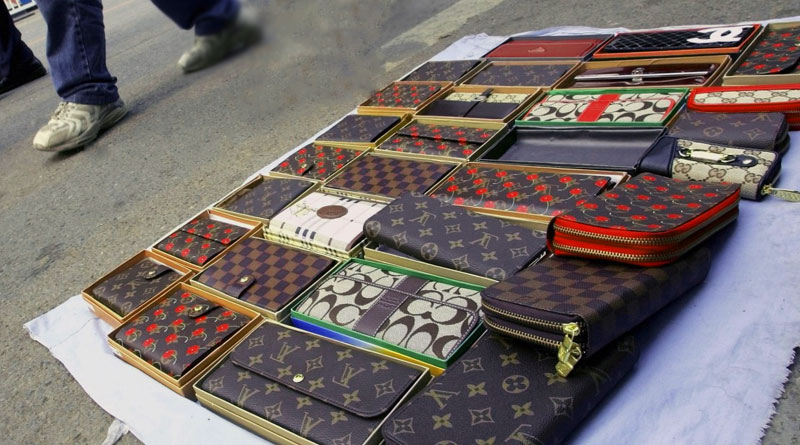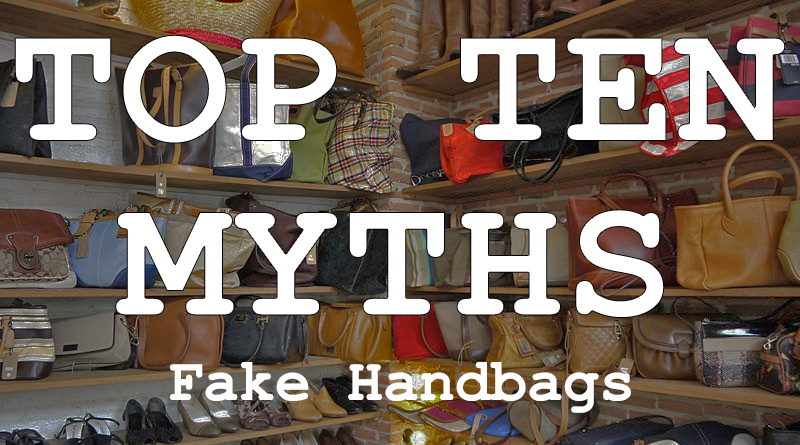Top Ten Myths About Counterfeit, Fake and Replica Handbags
Buying a fake handbag may seem daunting with the numerous myths and misconceptions floating around about fake handbags. Digging into the myths and finding the truth about fake handbags could dispel many of the issues. The truth is, luxury brands often protect themselves by perpetuating fake news articles that spread scary myths about how dangerous counterfeit handbags can be. Often it is ignorance that spreads the myths about what counterfeit bags are really like and the affect that they have. We have an unbiased look at the top ten myths pertaining to counterfeit handbags.
The Top Ten Myths About Knock off Handbags, Debunked:
Myth 1: Fake Handbag Manufacturing Employs Sweatshop Labor
It could be true that fake handbag manufacturing could support sweat shop labor in some cases. Fake handbag manufactures probably do not employ any worse sweatshop labor jobs than the genuine handbag manufacturing industry already does. Sweatshop labor can be a horrible business, but genuine handbags are often made in the same awful work conditions. These handbags come from the same third world countries that the fakes are made in. To see if they are being hypocritical, buyers should check the tags of their favorite clothes to see the country of manufacture. If the ethicality of sweatshop labor truly matters to people, then buyers should dispose of all goods marked from countries that allow sweatshop labor.
Myth 2: Fake Handbags Pose a Health Danger to The Public
The misconception that handbags pose a risk to human health often comes from the common mistake of lumping knockoff handbags in with all the other counterfeit goods. Some counterfeit goods such as cosmetics or medications could pose a serious health danger. However, no evidence exists yet that shows that fake handbags, or their manufacture, could pose a risk to human health. Nevertheless, some chemicals used in the manufacturing of all handbags could be risky. No product has ever been deemed dangerous by the U.S. government.
Myth 3: The Police May Arrest Fake Handbag Buyers
Buyers in the US are not at risk for getting arrested for buying fake handbags. The legality of buying fake handbags online and in-person is currently a little bit iffy. Initiatives to squash counterfeiting are currently focused on the sellers, not buyers. Even if a police officer were to confront someone about buying a fake handbag, an easy defense is to feign ignorance that the handbag is actually fake at all. Some fakes are often just as good quality as the original and Police officers are not experts on handbags and which ones are legitimate.

Myth 4: Fake Handbags Support Terrorism, the Drug Trade and Gangs
News headlines meant to grab attention often scream myths about the ways that handbags support organized crime. However, it could be argued that counterfeit goods may indirectly support terrorism, but other everyday items may support terrorism much more directly. The oil trade is a dirty business, and has much more direct ties to terrorism. Additionally, ISIS even used oil wells to fund its reign of terror.
While terrorism is never justifiable, there is an inherent double standard in fueling up at the gas station while condemning counterfeit handbags for supporting terrorism. Just because counterfeit bags do not directly support terrorism and crime, they are often still made in third world countries that do suffer from corruption. No hard evidence for a direct link between counterfeit bags and terrorism exists, other than false beliefs that they are connected. At the end of the day, there is no value to the original handbag manufacturer in connecting counterfeits with terrorism, other than to help with handbag distribution. Terrorist groups are more than happy to help distribute fake handbags if it means money for their cause.
Myth 5: If the Bag is Expensive, it Must be Real!
Some counterfeiters can scam buyers into believing that their bags are real by setting the price close to what an original bag would typically cost. These counterfeiters prey on the buyer that is looking for a discount on a genuine bag and they keep their prices just below the normal genuine bag price, to trick them.
To avoid this scam, people should buy smart. If a buyer is looking for a genuine product, they should only buy from designated authorized retailers of the genuine handbag. They should ask resellers for hard proof that the bag is real. Some “super fakes” can cost hundreds of dollars and be well worth the high price as well. Of course, buying in-person is always the best way to determine quality, as the look and feel of a bag is never truly discernible from photos. The problem is that super-fake handbags are hard to tell from the real deal and their price may be close to the genuine article.
Myth 6: All Fakes are Bad Quality
As mentioned in Myth #5, some fakes are considered “super fakes”, and are near identical copies of the genuine handbag. These bags are often excellent quality, and will last a long time, much like the originals. There are many knock off bags that are terrible quality and may fall apart after a couple of uses. Conversely there are knock off bags that will last for years. The best way to determine quality is to buy in person and feel the quality directly. Read more about Super Fake Handbags
Myth 7: Bags with Logos are Real Because Counterfeit Bags Cannot Use Logos
This is a completely false claim. Counterfeiters clearly do not care about copyright law, or else they would not be in the counterfeit business. Sometimes, counterfeit bags will employ a slightly modified logo or design. Many other replica handbag manufacturers will just use the copyrighted logos, without refrain. However, some online retailers prohibit sellers from using the brand names of bags in their advertising as a way to combat counterfeiting. Buyers must use workaround search terms to find these bags. Some of the popular search terms are “Brand H” in place of “Hermes”, or even misspellings of the name of the brand like “Yes Saint Larent”.

Myth 8: Buying Online is Better than Buying in Person
Some believe that buying handbags online can lead to better deals. While there are advantages to buying online, buying in person is often the better route. It is impossible to discern the true quality of an item online. People are also much more susceptible to scams when making an online purchase. In person, haggling can bring down the price of the handbag significantly, while haggling online is sometimes impossible. Quality and size is often hard to determine online, and the consumer must usually rely on reviews from questionable sources. Online reviews and photos may be inaccurate or fake. Buying a handbag in person is so much better than buying online for these reason alone. The texture of the bag, stitching and small details that do not show up online, matter a great deal more. Buyers may receive a handbag that does not look the same as the photo.
Myth 9: Serial Numbers Mean a Bag is Real
Dust bags, serial numbers, certificates of authenticity, and bag tags do not mean that a bag is real. In some cases, these items could actually indicate that the bag is not real at all. If the original genuine bag does not come with tags, a tag could actually mean that the handbag is illegitimate. Some enterprising counterfeiters will actually make a tag to try to make the handbag seem more authentic. Even though a real bag may not even come with a tag. Some genuine handbag manufactures actually copy ideas from the fake handbag manufacturers and incorporate them into the genuine bag.
Serial numbers can be easily faked, and counterfeiters can even make UPC bar codes scan to the real product. This does not mean that the product is legitimate in any way. All of the anti-counterfeit features on the bag should be treated with skepticism.
Myth 10: Purchasing Fake Handbags Will Lead to Credit Card Fraud
The potential risk of credit card problems with buying fake handbags online is partially true, but is not that common. Shady web sites may steal credit card information, but some buying strategies can help reduce the risk. PayPal is a great way to protect credit card information online. It acts as a barrier between sensitive information and online sellers. If using PayPal is not an option, buying a prepaid Visa card that contains roughly the same amount of money as the purchase, would be just as secure. For instance, buyers should never give out credit card information unless completely confident that their information is secure. All buyers must pay in cash for sales of handbags on Canal Street. Buyers must visit the ATM before purchasing items from the handbag vendors. This means that the buyer’s personal information will not be needed, making in person purchases that much safer.
